This newsletter is probably too long for email. To read it in its entirety, and to see all the photos, switch to the browser version by clicking on the title. (Or read it in the Substack app.) Want more Fritinancy? Here’s the complete archive.
I don’t remember how I stumbled upon urban policy specialist
’s newsletter — it isn’t in my usual branding-language-commerce ambit — but somehow I had the good fortune to discover it just in time to sign up for one of the most memorable travel experiences of my life. And it was right in my own backyard.Here’s how Diana described the tour:
Five years after the pandemic, this poster child for “urban doom loop” is turning the corner. San Francisco just elected a new mayor and a slate of new officials. It’s building whole new neighborhoods along the waterfront. Office buildings are getting renovated and converted. The city remains at the forefront of the co-living / co-housing movement and public space. And yes, the city is grappling with vacancy, disorder, and displacement, but coming up with some good solutions there, too. I want to see all this! I hope that my effort to pull together a learning experience about San Francisco is of value to you, and that you’ll join me.
Two days, February 20 and 21, for $40, plus transbay bus fare and the cost of a couple of meals. Ten people maximum. Sounded perfect. I was in.
Our itinerary comprised more than downtown San Francisco; we took Waymo robotaxis down to Pier 70, on the southern waterfront (super-interesting reinvention going on there!), and checked in at the area around Oracle Park, home to the San Francisco Giants, where new residential towers are bringing well-heeled renters to the Mission Rock neighborhood, formerly a freight terminal.
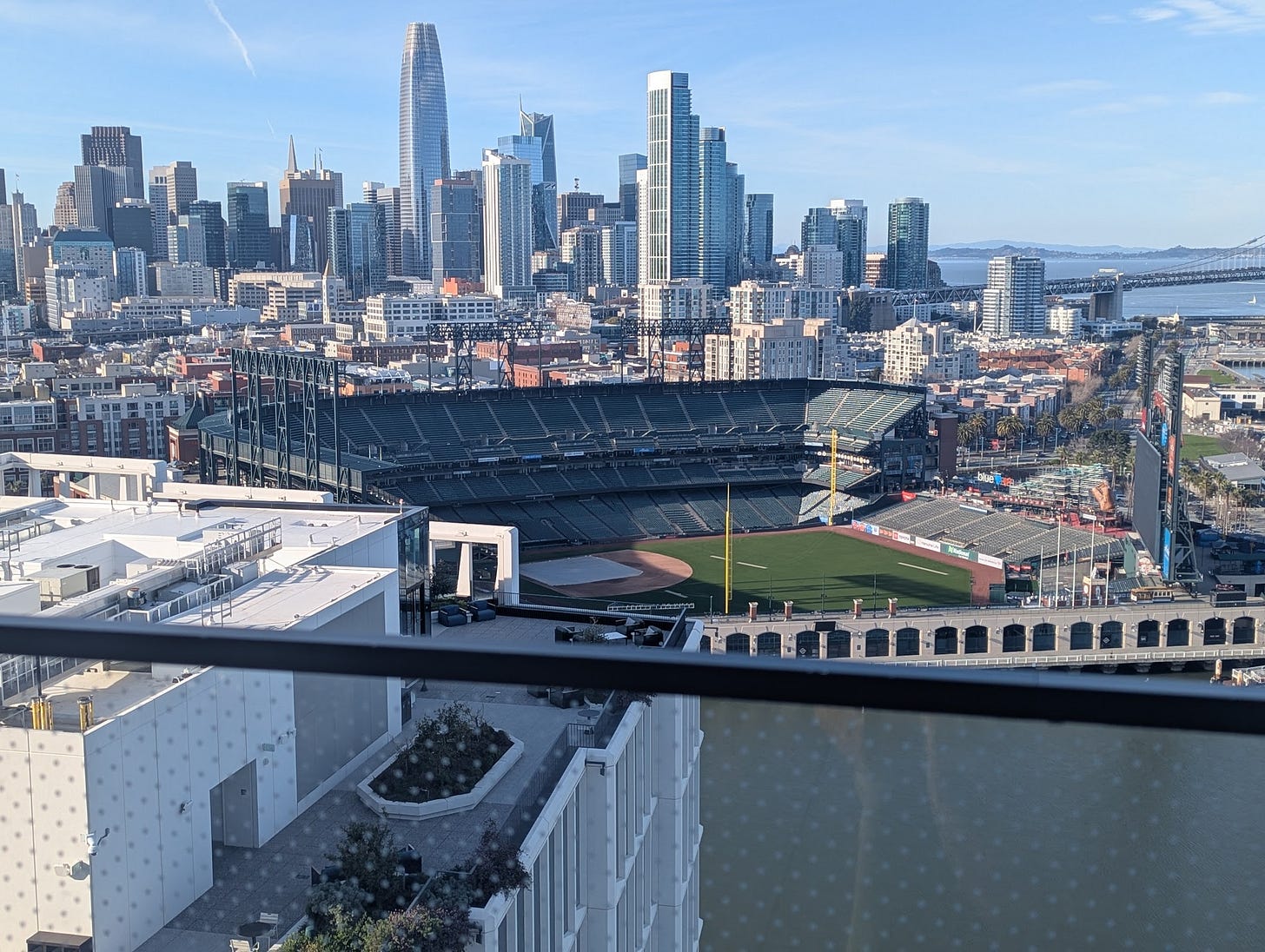
There was also an optional excursion to Oakland, which I skipped. But downtown San Francisco was the meat of the experience, and it’s what I’m going to focus on. (Diana has promised to publish her own write-up; subscribe to her newsletter to get her perspective.)
We began the tour on Thursday afternoon, February 20, at the corner of O’Farrell and Powell streets, on the edge of San Francisco’s Union Square. We could see the elegant Saks Fifth Avenue building a few blocks away, but what we saw at ground level was stark evidence of an 80 percent vacancy rate. “We’re the least recovered city” post-Covid, was the blunt assessment of Simon Bertrang, executive director of SF New Deal, which launched programs like Vacant to Vibrant to welcome an influx of small retail businesses and pop-ups to the area, and who joined our group to talk about his work. “We tell them, ‘You have the idea, we’ll take care of the rest,’” Simon said. One success story is Taylor Jay, which Vacant to Vibrant helped to open in December at 220 O’Farrell; the shop sells “elevated fashion basics.”1
From Union Square we walked down to Mint Plaza, at Fifth and Market — adjacent to the no-longer-active San Francisco Mint — where we met a different slice of downtown life: the “practitioners” (their term) of Urban Alchemy: formerly incarcerated men (and a few women) who now work with homeless, addicted, and mentally ill people on downtown streets. One UA practitioner told us he’d spent 21 years behind bars; another said UA had given him the first job he’d ever had.
The UA practitioners escorted our group through a depressing (but probably totally safe) stretch toward the Warfield Building at 988 Market Street, where there was another vibe shift. Carolyn Choy, a managing director at Community Arts Stabilization Trust (CAST), told us how CAST had acquired the nine-story building earlier this month for a bargain $7.3 million; KALW — the oldest FM radio station west of the Mississippi — was scheduled to take over two floors, and a venture-capital firm will also be moving in2 is hoping to attract other tenants in arts, culture, and independent media. It was a significant step toward reclaiming some of the verve that had vanished from the mid-Market area when Twitter/X abandoned its headquarters, a few blocks away, last September.
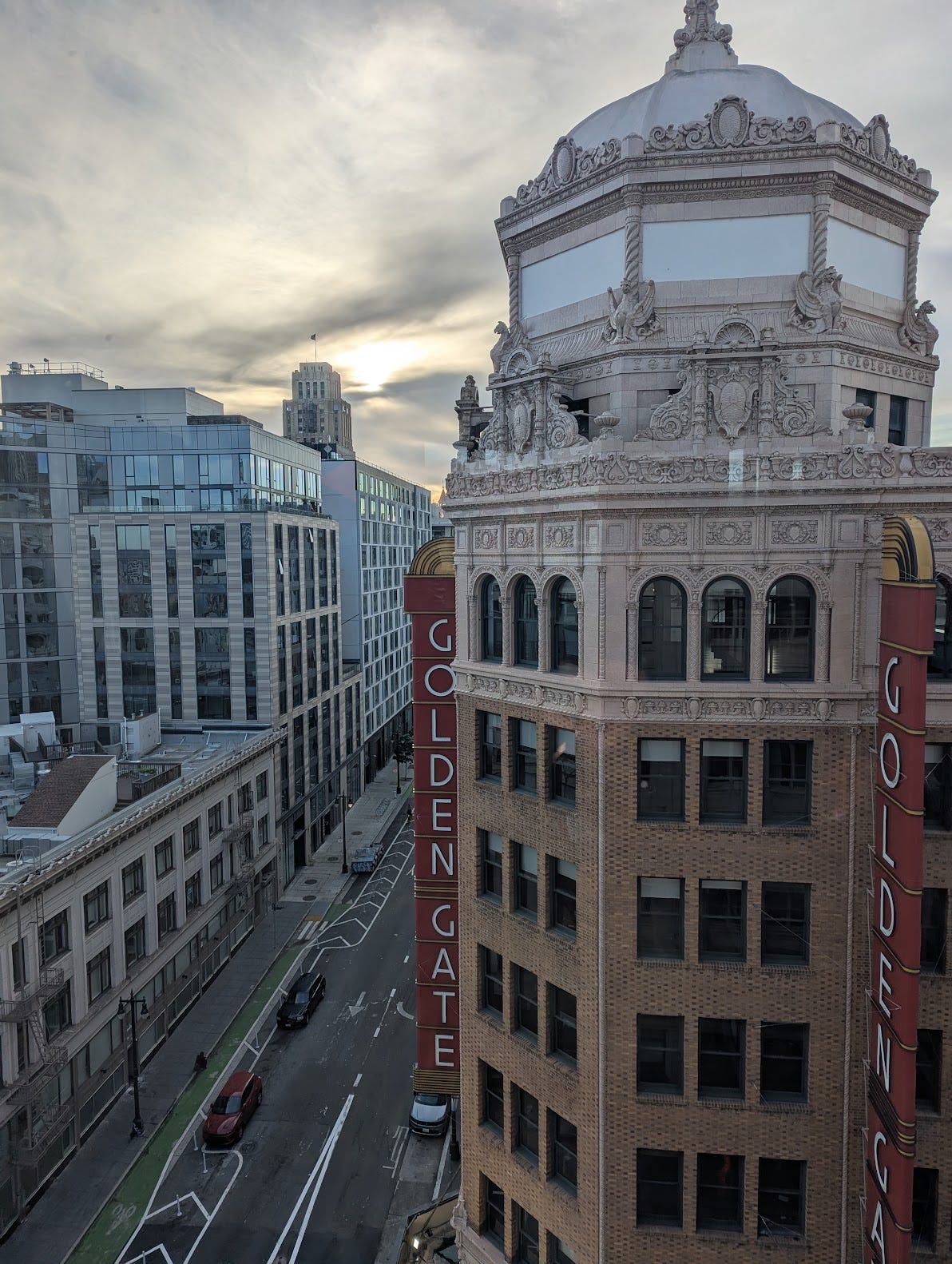
There’s more to come, but first I want to explore the concept and the word downtown. It’s an Americanism, originally used literally to mean “down from a more northerly or elevated part of the city.” (Manhattan’s long, narrow topography was probably a major influence; other places, especially in Europe, favored “city center.”) The OED has a 1770 citation, but the usage picked up as an adverb and adjective in the 1830s and as a noun in the 1850s. By the early 1900s downtown was metonymic slang for “police headquarters.”
Downtown can signify “hip” or “bustling”; the 1965 song “Downtown” was written by a Brit, Tony Hatch, who got the idea for the lyrics while staying in New York; it became a hit when sung by another Brit, Petula Clark. (“The lights are much brighter there / You can forget all your troubles, forget all your cares.”) But in “Uptown” (1962), sung by the Crystals, downtown is the rat race: It’s where “he gets up each morning” and where “everyone’s his boss and he’s lost in an angry land / He’s a little man.” Contrast that with uptown, where our hero goes “each evening to my tenement / Uptown, where folks don’t have to pay much rent.” In Bill Joel’s “Uptown Girl” (1983), the singer is a “downtown man” — working class, struggling — who yearns for an “uptown girl” who’s “getting tired of her high-class toys.”
In many cities, downtown is the civic and financial center; in the 20th century, downtowns were retail hubs as well. San Francisco’s downtown is a little more amorphous, comprising Civic Center (government buildings, arts institutions like the Opera House and Davies Symphony Hall), the Financial District (which some people are trying to relabel FiDi), Union Square (once filled with glamorous department stores, now attracting smaller couture brands like Dior and YSL), Market Street (hollowed out since the pandemic), and even South of Market (SoMa), associated with tech startups and more-established companies like LinkedIn and Pinterest.
The Downtown SF Partnership, which launched in January 2020, covers a portion of this blobby “downtown.” It’s a community benefit district (the other kind of CBD), “working to enhance the downtown core, the traditional Financial District and historic Jackson Square through public/private partnerships, placemaking, activating the public realm, clean and safe operations, marketing support, economic development, and more.”
DSFP’s Claude Imbault met us at Mechanics Monument Plaza, near the Montgomery BART station, to talk about how his organization had spruced up the plaza — he used words like “amenitized” and “activated” — with lighting, seating, regular cleaning, and “greening.”
We meandered northward along alleys like Leidesdorff — named for a 19th-century Jewish-Black sea captain and settler — where DSFP has helped to fund beautification projects such as a street mural by Peruvian artist Claudio Talavera-Ballón. (The area is built on infill: Until the Gold Rush, it was part of San Francisco’s shoreline.)
“Landing at Leidesdorff,” as the overall project is called, aims to transform the small neighborhood, with its two- and three-story commercial buildings, into “an amenity,” as Imbault put it.
We peeked inside the Merchants Exchange (1904), a reminder of San Francisco’s gilded past.

The highlight of the tour, though, was a very special visit to the recently renovated — or “remastered,” to use the developer’s language — Transamerica Pyramid.
I could devote an entire newsletter — a whole book! — to the Transamerica Pyramid, which in its half-century-plus lifespan has gone from detested and protested (San Francisco’s city planning director called it “an inhuman creation”) to treasured and fiercely defended. (This is par for the course in San Francisco, where even the Golden Gate Bridge was once decried as a view-spoiler.) I’ll keep things brief by referring you to a nice history of the building and its surroundings published by the San Francisco Standard in 2023.
In October 2020, Israeli American real estate developer Michael Shvo bought the Transamerica building for $650 million; it was the largest commercial transaction in the U.S. during the Covid pandemic. Shvo immediately began “remastering” and promoting. I took this photo in December 2022:
The building reopened in September 2024, but the public is allowed only in the plaza, with its towering redwoods and whimsical animal sculptures; and in the lobby, which houses art and architecture exhibits. To venture further, you’ll need to be a tenant, befriend a tenant, or know an architect with a passkey. Our group was admitted into the inner sanctum by Kelly Yuen, an architect with Foster + Partners, the London-based architecture firm that managed the $250 million renovation.
Which includes a top-floor bar.
And a 26th-floor gym and spa, empty on the day we toured.
“I should have been a VC,” one member of our group said plaintively as he sank into the plush upholstery in the 47th-floor lounge. I admit I was reconsidering my own life choices. Money does indeed change everything.
You can read more about the Transamerica transformation in a September 2024 review by Chronicle urban-design critic John King. King retired two weeks after that piece was published, but he’s still very much on the scene: As our continuing good fortune would have it, our group had a chance to wave to him later that day, as he cycled through Mission Rock on a Lyft bike, looking jaunty in a trilby hat.
Besides the built environment and the “amenities,” what impressed me most about the tour were the people defying the odds to bring it all about. This isn’t a shining moment in America’s civic history, and I’m heartened to know that there are people who still believe we can have a beautiful, functioning metropolis and who are taking steps, small or grand, to realize that goal. One member of our group expressed it well in an email: “The experience showed me a side of The City I had never appreciated before ⎯ the network of do-gooders and artists and qangos [quasi-nongovernmental organizations] and civil servants and capitalists who have found common ground in working together to make one of the world’s great cities even greater.”
My thanks to Diana Lind for her knowledgeable leadership and superb organizing skills. It was a pleasure to get to know the other members of our small tour group, who included a recent college graduate working in Boston as a software engineer; a retired San Francisco house painter; a staff member at the Port of San Francisco; a professor of politics at the University of San Francisco; a self-described social entrepreneur; and a grant-writer interested in reviving a rural community. If you’d like to join an upcoming city tour — Salt Lake City, maybe? — be sure to subscribe to Diana’s newsletter,
.Corrected, with thanks to Catherine Nguyen at CAST. The VC firm is a former tenant under the building’s previous ownership.





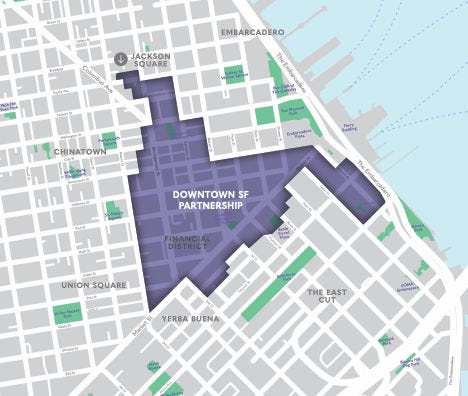




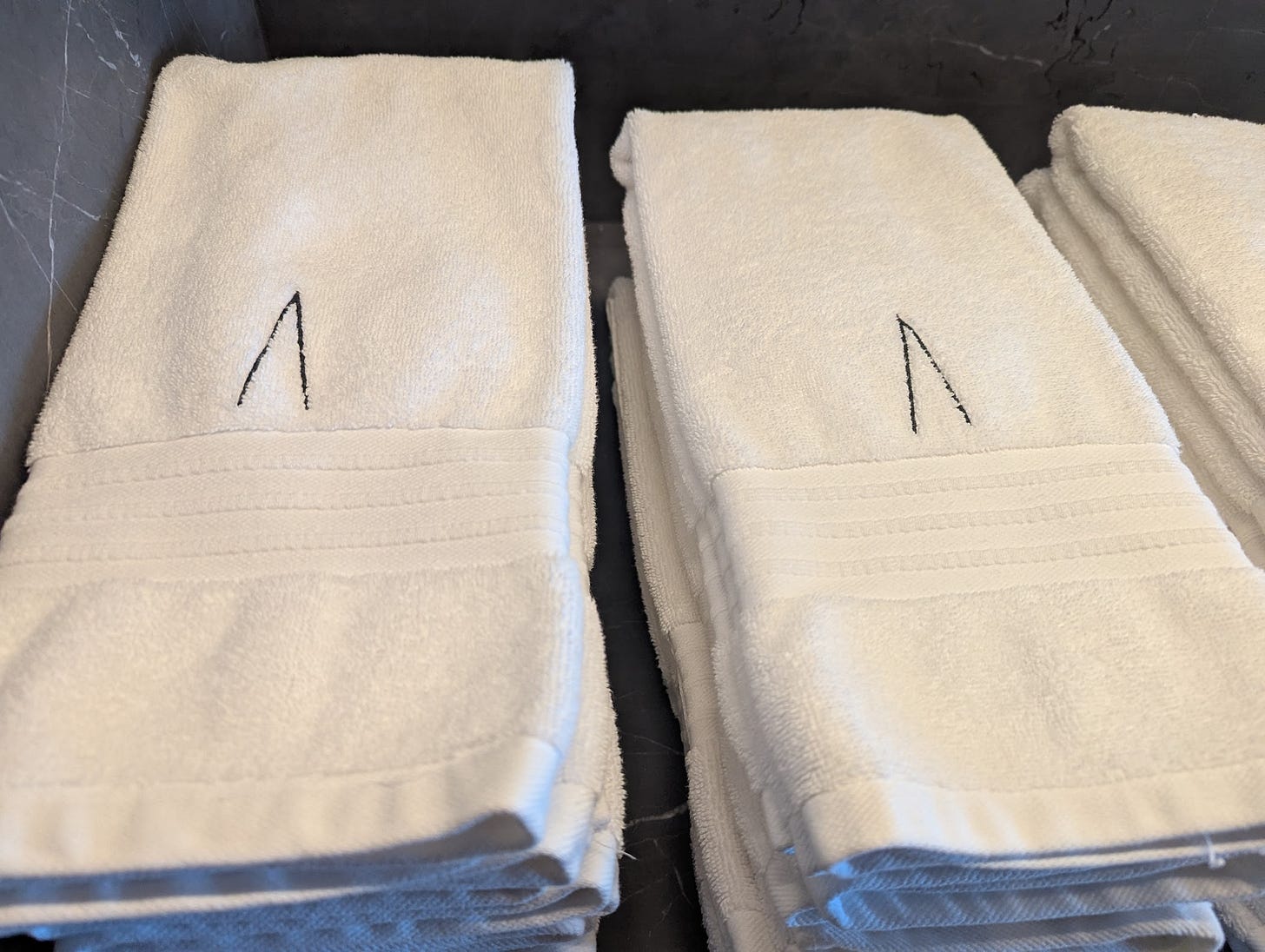
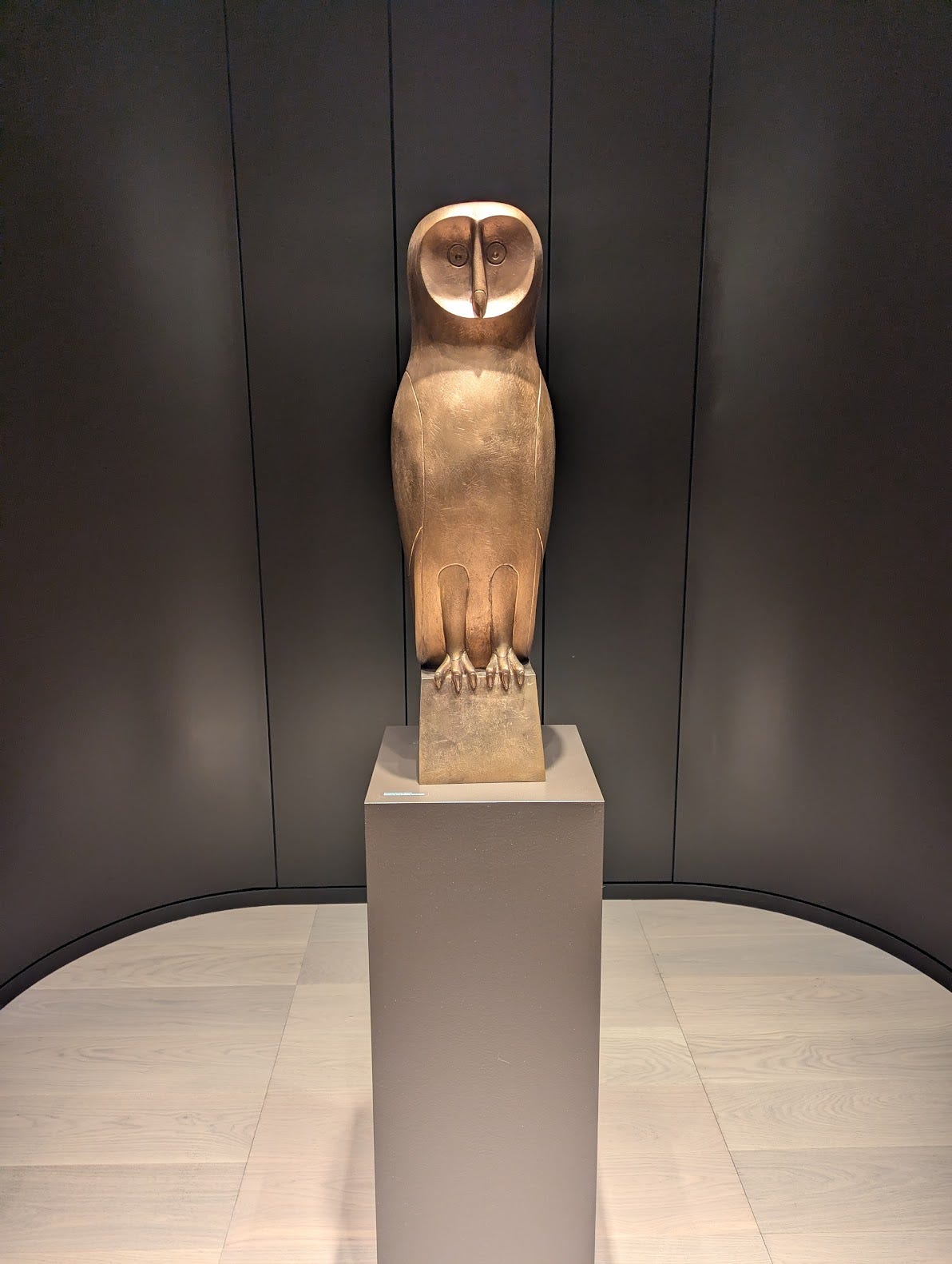
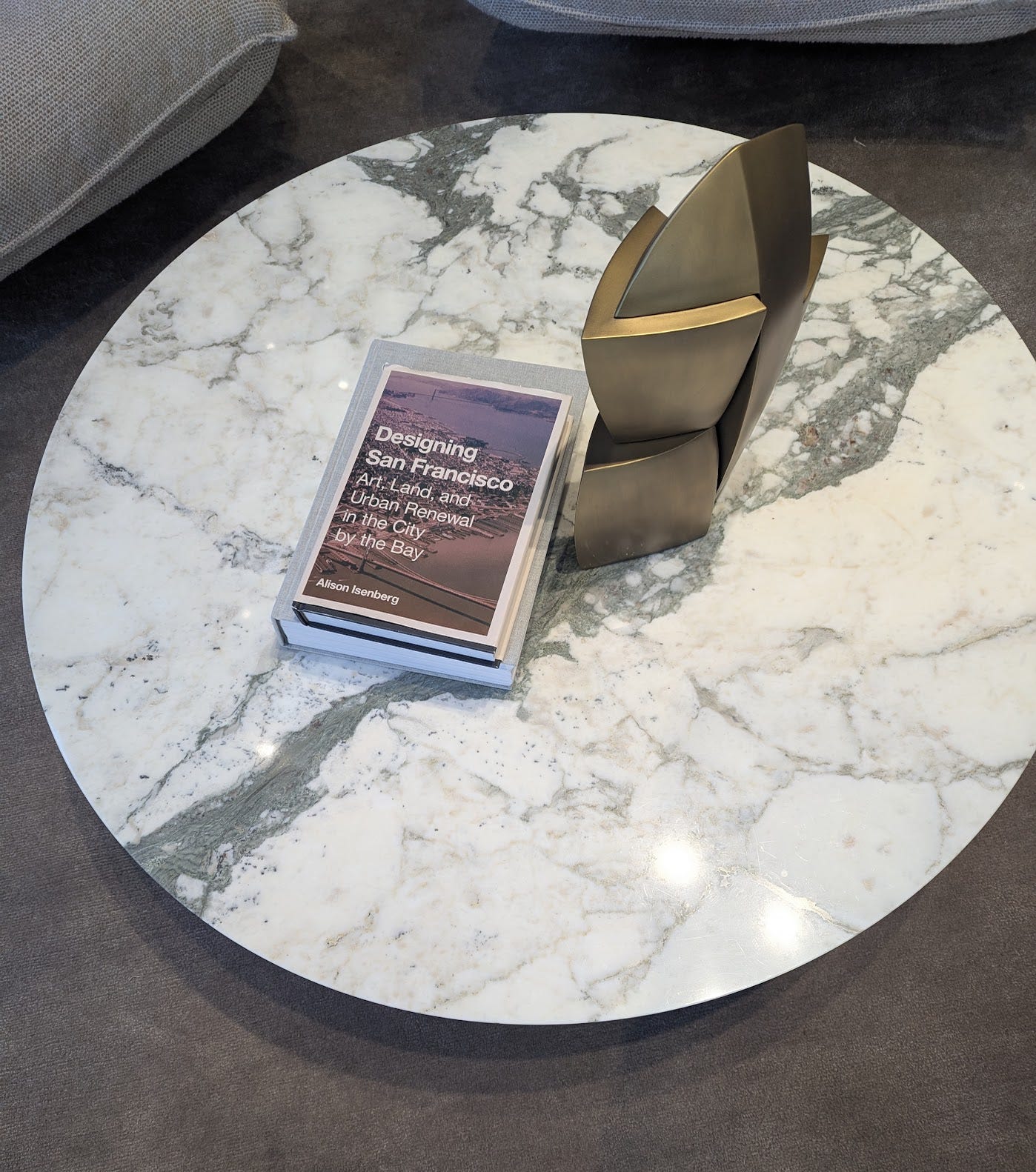
Thank you so much for this Nancy! I love your recap here and I am working on my piece(s) about SF right now, hoping to get the first of a few parts up tomorrow.
Are you familiar with Downtown: Its Rise and Fall by Robert Fogelson?